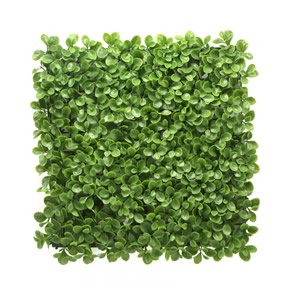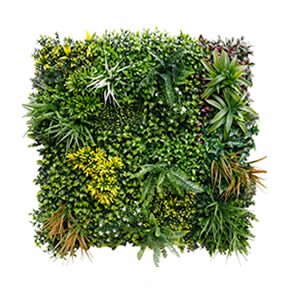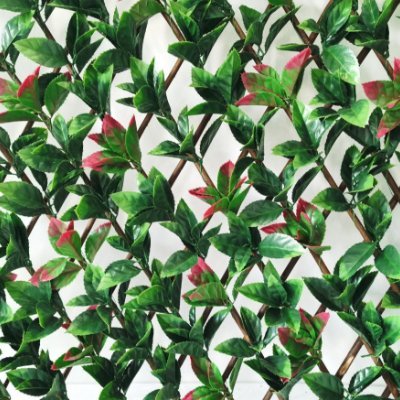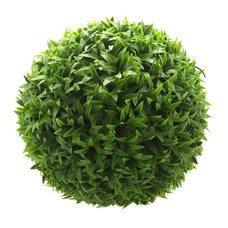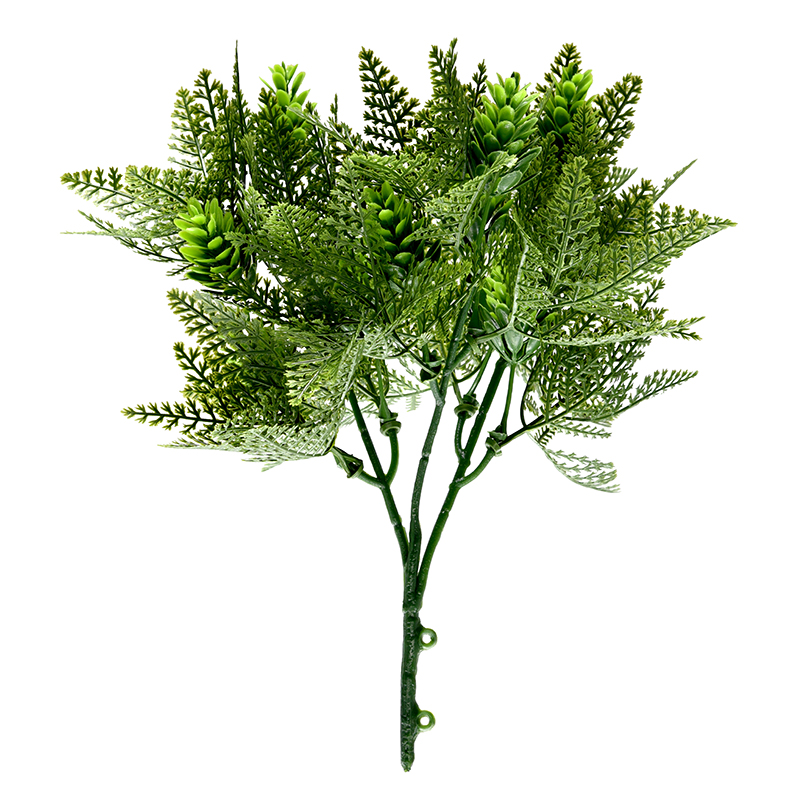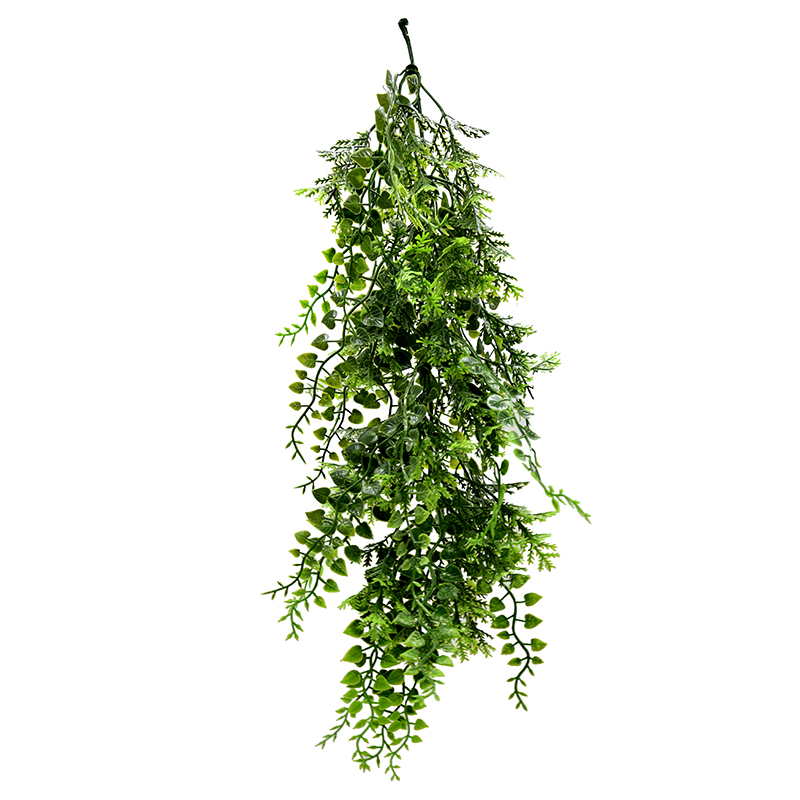Everything You Need to Know about Artificial Hedging
 2024 03 14
2024 03 14What are the benefits of opting for artificial hedging? It proves versatile for both indoor and outdoor applications, offering privacy for your patio, porch, and backyard, while also enhancing the aesthetic appeal of your interior. Unlike real plants, faux hedging requires no maintenance and remains vibrant throughout all four seasons.
Instantly elevate the entrance to your cafe, restaurant, showroom, or office space with this all-year-round hedging. This all-season alternative is also perfect for creating a welcoming atmosphere and serves as a hassle-free decoration for themed parties.
In this article, we’ll explore the advantages and features of artificial hedging to help you make informed decisions for your decor needs. Let’s dive in!
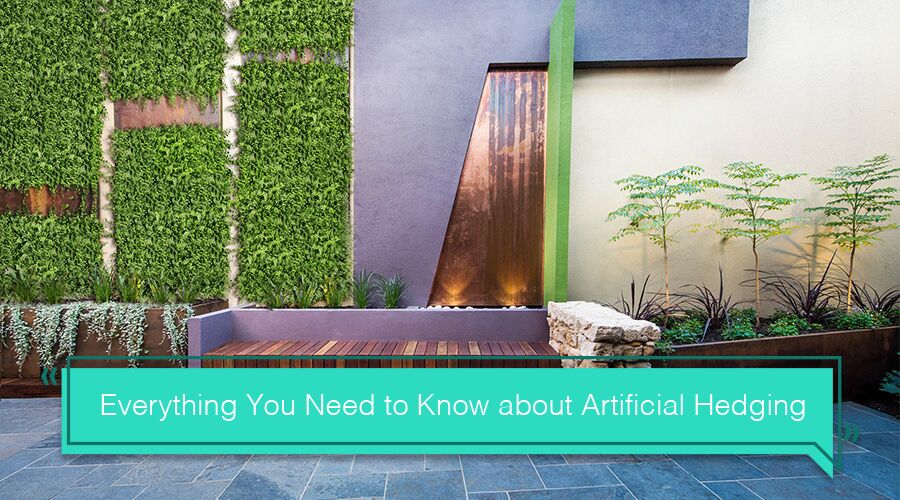
What is artificial hedging?
Artificial hedging refers to synthetic greenery designed to closely replicate the look and functionality of authentic hedges. Crafted by manufacturers to resemble the color, texture, and density of real hedges, fake hedging panels offer homeowners the aesthetic benefits of natural foliage without the need for ongoing maintenance.
Artificial hedge walls are available in diverse shapes, sizes, and materials that contribute to the overall durability and lifelike quality of each product. Their versatility makes them suitable for both indoor and outdoor applications. Many individuals utilize the boxwood hedge to establish privacy screens, conceal unappealing features, or elevate the visual appeal of outdoor spaces.
Certainly, given that faux hedges are synthetic, they eliminate the need for regular watering, trimming, or pest control. This low-maintenance aspect makes them an attractive option for people without a green thumb or those seeking a straightforward alternative to real greenery.
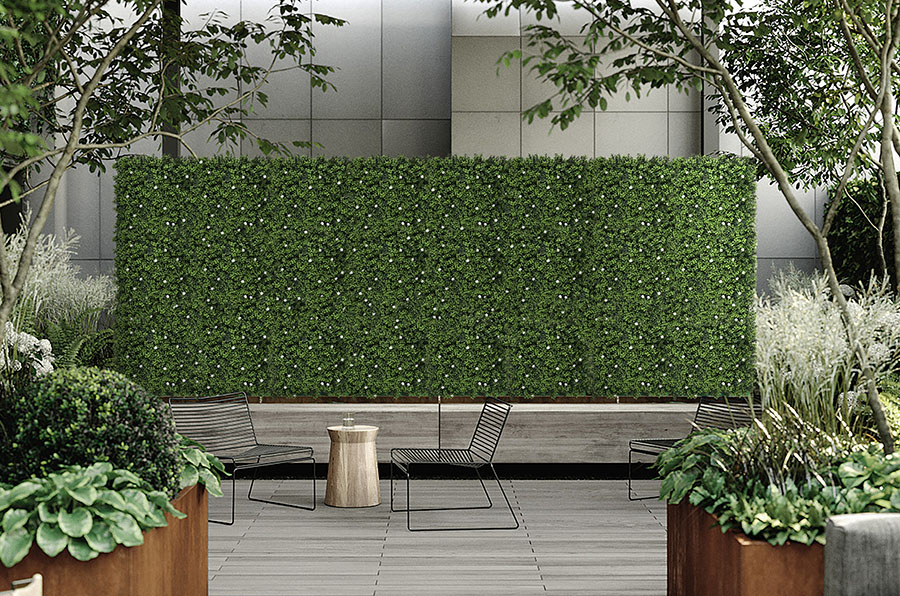
Best types of artificial hedging
When it comes to choosing the type of artificial wall hedge, there isn’t a clear-cut wrong option, but it is crucial to consider specific differences before arriving at a decision. Taking the time to understand these distinctions will help you make an informed choice that aligns with your preferences and requirements.
So, here’s what we recommend for first-timers:
Classic Artificial Boxwood Hedges
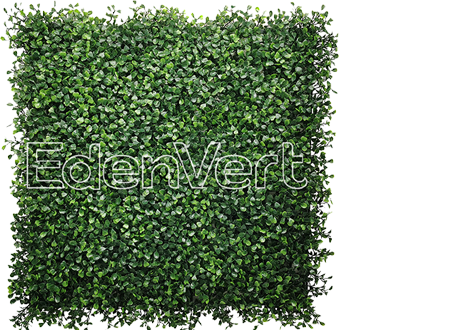
CCGA145 Artificial Boxwood Panel
Available Sizes: 50*50cm, 1m*1m
The commercial-grade artificial boxwood hedge is a timeless landscaping choice ideal for beginners. What sets apart the classic boxwood hedge panel is its realistic appearance coupled with the convenience it offers for your DIY projects.
Designed with meticulous attention to detail, our artificial boxwood wall replicates the lush, dark green foliage with the exact texture and color of real boxwood leaves. Rest assured, it seamlessly integrates with your natural surroundings. Moreover, these faux boxwood wall panels are crafted from high-quality materials, designed to withstand harsh weather conditions and UV exposure, while ensuring that the hedge maintains its shape.
Premium Artificial Laurel Hedges
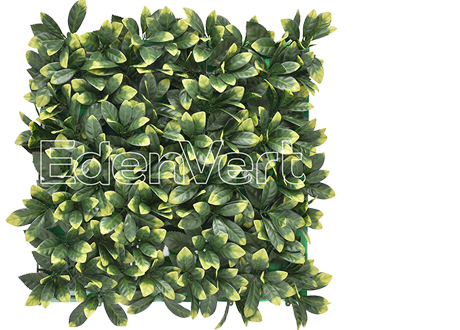
CCGA034U Artificial Laurel Panel
Available Sizes: 50*50cm, 1m*1m
If you’re looking for something more eye-catching, consider the premium laurel hedge plant wall. This marvel is an elegant landscaping solution that combines vibrant laurel leaves with practicality.
Tinted with subtle yellow hints to mimic the natural yellowing of laurel leaves, the leaves on this artificial hedge are densely packed and highly durable. These faux hedge panels will add elegance and sophistication to your yard, balcony, poolside, or commercial property.
Should the shape and size not suit your preferences, you have the flexibility to cut them to your liking using the sturdy grid on the back. Ideal for DIY enthusiasts, these laurel hedges are remarkably simple to install and fully adaptable to your requirements.
Luscious Jasmine Artificial Hedges
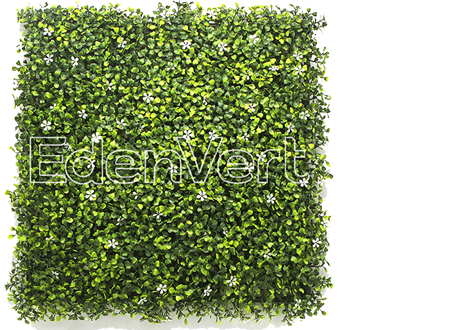
CCGA002 Artificial Boxwood with Jasmine
Available Sizes: 50*50cm, 1m*1m
With over 200 species of Jasmine plants, each possessing its unique characteristics. But even though they can be very different, they all share a common thread – sophistication. This is why the optimal solution for elevating the aesthetics of different spaces lies in the lush jasmine hedges.
The lifelike foliage of the star jasmine hedge imparts a vibrant atmosphere and guarantees enduring beauty, even under prolonged sun exposure, thanks to its UV-resistant production and sustainable materials.
Your jasmine hedge can seamlessly integrate into various settings, be it a residential jasmine privacy hedge or a commercial jasmine fence hedge. Once in place, your guests will find it challenging to distinguish from the real thing.
How long does an artificial hedge last?
Our faux hedges are designed for long-lasting durability, but predicting their exact lifespan can be challenging. Numerous factors, such as your location and the prevailing weather conditions, can influence their longevity.
Indoor artificial green wall can endure for up to 8 years or even longer if well-maintained. However, artificial hedges for outdoor exposed to sun, wind, and rain, their lifespan may be reduced. For outdoor use, the majority of our artificial living wall products are expected to last for a minimum of 5 years.
How to pick the best-quality artificial hedging?
With so many options available on the market and numerous manufacturers competing for your attention, the quest for high-quality artificial hedge panels can become overwhelming. Hence, it’s crucial to comprehend the key aspects that define quality. Here are the 5 aspects you need to keep in mind:
Appearance
To ensure you’re acquiring a high-quality product, seek out artificial hedging that closely replicates the texture, color, and shape of their natural counterparts to the point where they are virtually indistinguishable.
As a bonus tip, take note of consistency, observing whether all products exhibit a similar appearance. Significant variations between hedges of the same type, such as differences in density or color saturation, suggest that the manufacturer may not be among the industry’s finest.
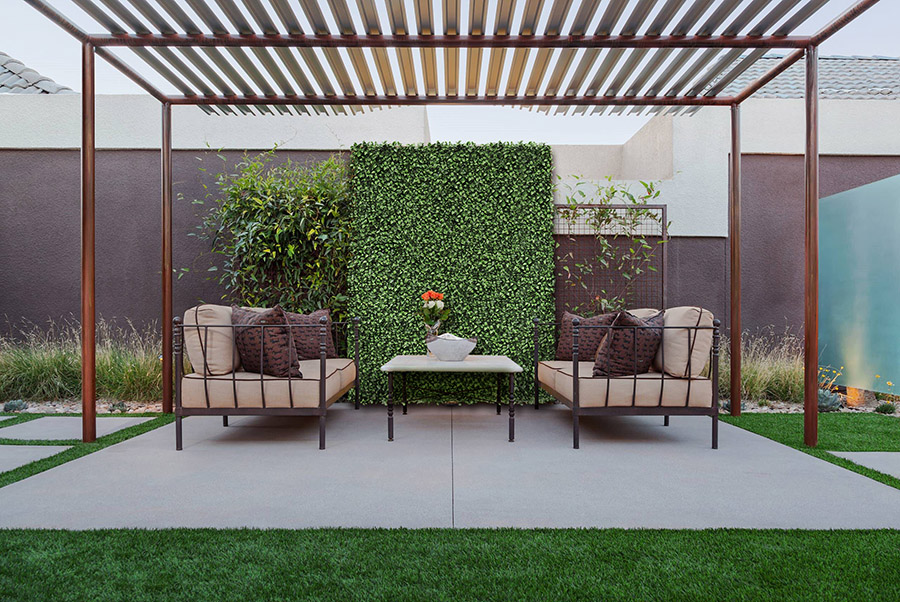
Touch and Density
If you have the chance to closely examine a faux hedge panel, run your fingers through the foliage to gauge the texture and density. Top-tier faux hedging will feature leaves that feel remarkably realistic, capturing the intricate veining and curves found in natural leaves.
The texture should be smooth rather than rough. When shaken, the faux foliage should exhibit movement akin to real greenery, not stiff like plastic sticks.
Grid Thickness
The quality of an artificial hedge isn’t solely determined by the faux foliage. On the contrary, the plastic grids that secure the faux leaves are equally important. If longevity is your goal, opt for fake hedges backed by a thick and sturdy grid.
If you choose an artificial hedge with an overly thin and floppy grid, your product will be more vulnerable and prone to breaking down in harsh weather conditions.
Certificates
Artificial plant suppliers or manufacturers who are conscientious about their faux hedge production will ensure strict adherence to regulations and the highest industry benchmarks at every stage. Yet, as an ordinary consumer, discerning this diligence can be challenging. Therefore, before investing your money in any artificial hedging, it’s prudent to conduct research.
Examine the supplier’s online platforms, scouring for endorsements or certifications from external entities. Take, for instance, EdenVert, which holds ISO certification and complies with RoHS and REACH standards. These credentials offer insight into our production methods and materials rationale.
Fading Degree
Finally, let’s talk about fading. The occurrence of fading is prevalent in low-quality artificial greenery. Fortunately, there’s no need to take a gamble to determine the fate of your faux hedge.
Rather, focus on examining the materials comprising the artificial hedge and verify the presence of UV-resistant properties. A high-quality faux hedge is meticulously crafted to withstand fading caused by extended sun exposure, ensuring its color remains vibrant even in outdoor settings. Opting for EdenVert as your supplier ensures peace of mind, as their artificial hedging comes equipped with the most robust built-in UV protection available.
How to install artificial hedges?
Before installation, please ensure that:
1. Have your tools ready, such as pens, band tape, plastic ties, scissors, hammers, drills, screws, etc. The specific tools needed will depend on the type of surface to which you will attach your faux hedge.
2. Check that your panels feature an easy-to-snap-lock system, facilitating the interlocking of panels without the need for additional tools. All EdenVert artificial hedge panels can be effortlessly separated and reattached to create virtually any desired size.
3. Measure the area and sketch out a plan for the placement of your artificial hedges.
4. Determine the number of panels required to cover your fence or wall, and then strategize the installation process.
Once you have confirmed these preparations, proceed to read the installation guide for your artificial hedge wall.
How to install fake hedges onto timber fences?
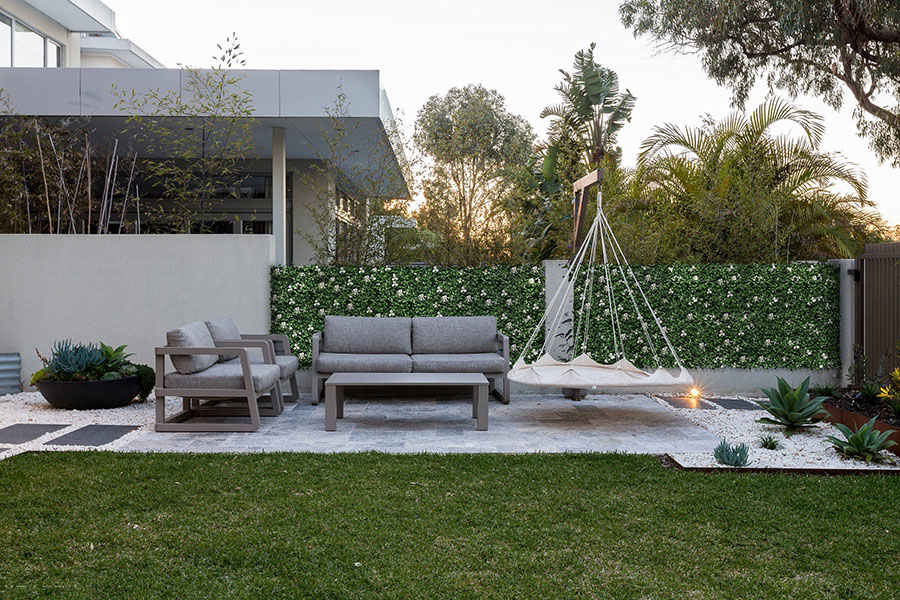
Tools needed: plastic ties, scissors, band tape
Step 1: Measure the dimensions of the fence where you intend to install the hedge.
Step 2: Utilize plastic ties to connect grid panels, adjusting them to the desired size.
Step 3: Connect the hedge panels according to the desired size, ensuring a consistent direction for the hedge.
Step 4: If the hedge size surpasses that of your fence, trim the panels to match the fence dimensions.
How to install artificial hedges on brick or concrete walls?
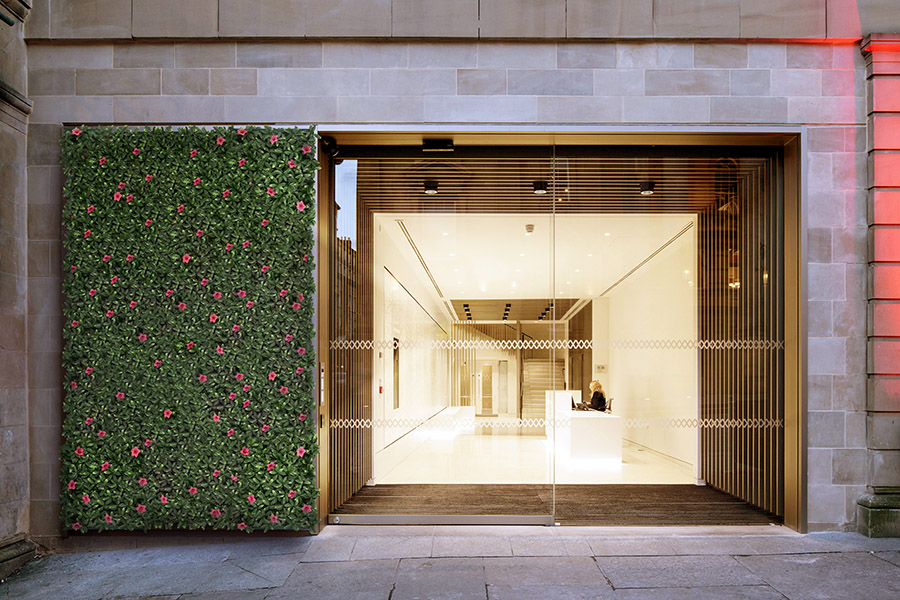
Tools needed: pens, drills, plastic ties, scissors, screws, band tape
Step 1: Begin by measuring the wall size using a band tape. Calculate the precise quantity of grid panels and fake hedges required. Cut the grid panels into appropriate sizes based on the wall dimensions.
Step 2: Plan and mark the estimated punching positions on the wall in advance. Utilize an electric drill to create holes at the marked positions, then secure the panels in place using expansion screws.
Step 3: Assemble the hedge panels into a suitable size, ensuring a uniform direction with the help of a snap-to-lock system.
Step 4: For convenient storage and handling, roll up the hedges.
Step 5: Fasten the hedge panels using plastic ties. Use scissors to trim any excess parts of the ties for a clean finish.
For a more comprehensive understanding of the installation process, we recommend watching the provided video for complete step-by-step instructions.
Installation tips for artificial hedging on wooden walls
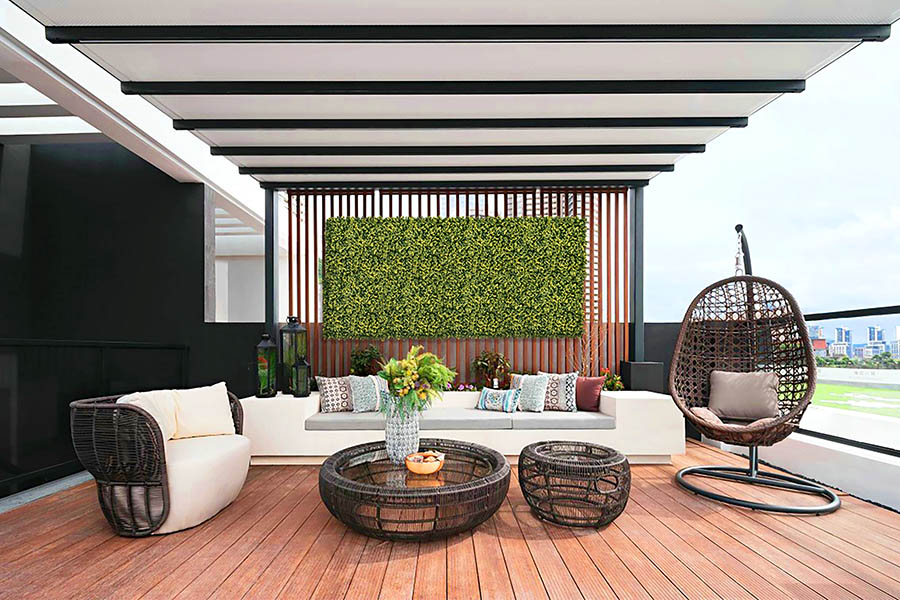
Tools needed: staple gun, plastic ties, scissors, band tape
Step 1: Follow the same technique of measuring.
Step 2: Calculate the number of panels.
Step 3: Connect the panels with the easy-snap-to-lock system.
Step 4: Connect all the panels to the required size.
Step 5: Secure the hedge panels with a staple gun.

